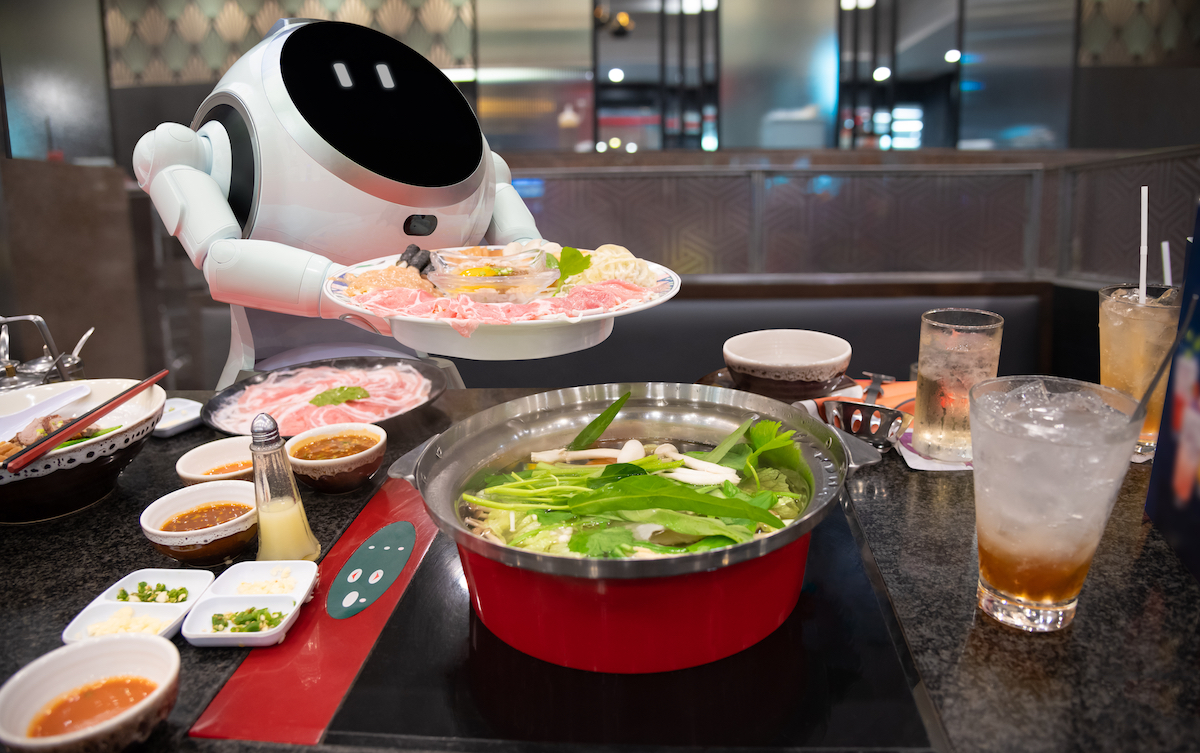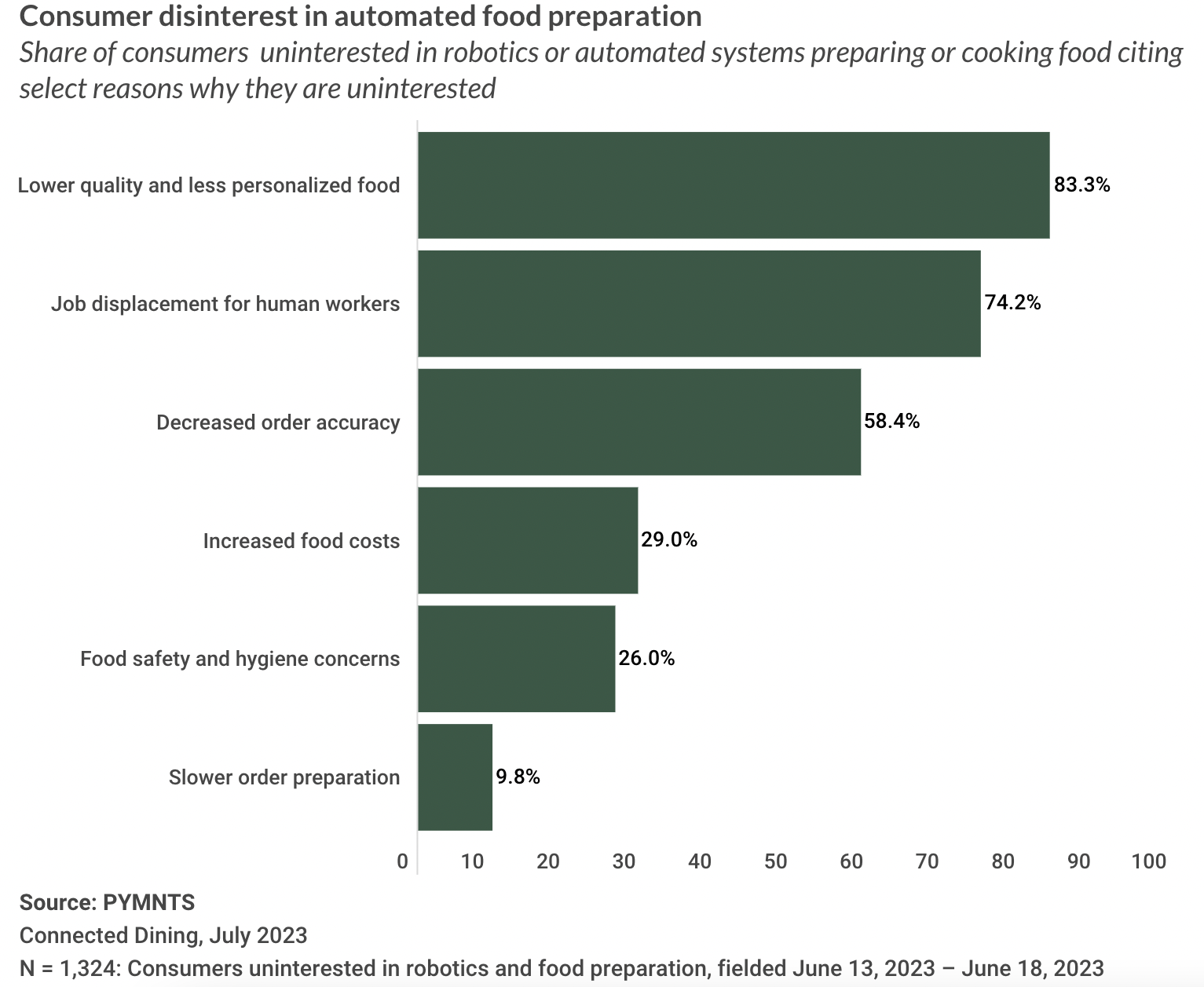Consumers Worry Automation Will Depersonalize the Restaurant Experience

As robotics catch on throughout the restaurant industry, consumers are worried about losing the personal experience they look for in a restaurant.
By the Numbers
PYMNTS’ exclusive report, “Connected Dining: The Robot Will Take Your Order Now,” drew from a survey of nearly 2,000 U.S. consumers conducted last month. It explores how consumers feel about different restaurant technologies and the factors driving those sentiments.

The study revealed that, among the two-thirds of consumers who are not interested in robotics-powered food preparation and production, the vast majority are concerned about the impact that automation will have on the meals themselves. Eighty-three percent reported believing that food prepared by automated systems or robots would be lower quality and less personalized than food prepared by humans — a greater share than said the same of any other concern.
These concerns come on top of consumers’ existing fears and observations about decreases in personalized service at restaurants. Research from PYMNTS’ study last year “The Digital Divide: Technology, the Metaverse and the Future of Dining Out,” for which we surveyed nearly 2,500 U.S. consumers, revealed that roughly 4 in 10 at least partially agree that restaurants are becoming increasingly less personal.
The Data in Context
Despite consumers’ concerns, automation is catching on throughout the industry, and kitchens are the sites of much of this innovation, taking over restaurants ranging from Sweetgreen to Chipotle to White Castle, among many brands.
In many cases, consumers are willing to get on board.
In an interview with PYMNTS earlier this year, Geoff Henry, then president of Jamba, discussed the progress of the restaurant’s partnership with autonomous robotic food service kiosk creator Blendid to create automated smoothie shops, highlighting positive responses from consumers who have tried it, especially among younger consumers who are more open to testing new technologies.
“The repeat rate has been very high,” Henry said at the time. “We’re obviously tracking those who purchase and then come back and purchase again [and] benchmarking that relative to what we would expect versus industry standards, and we’ve been pleased.”

